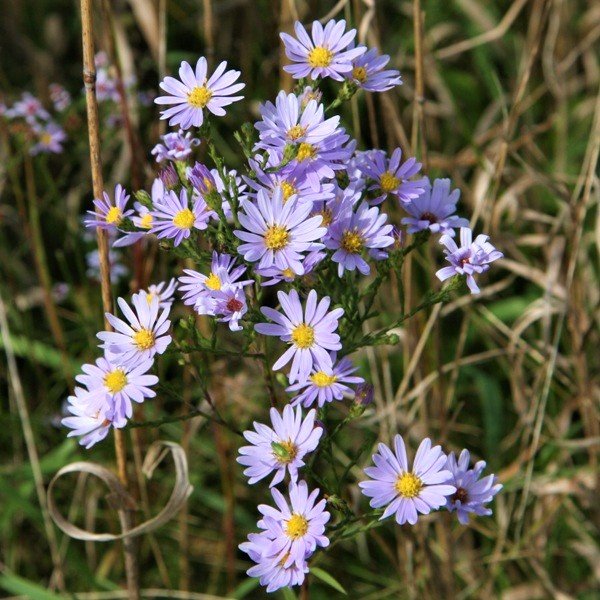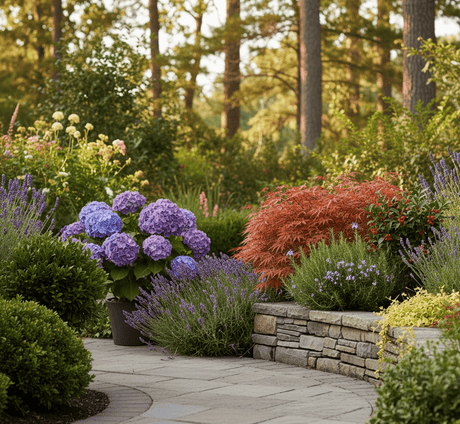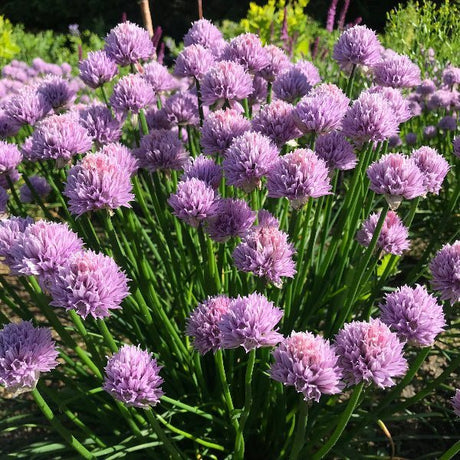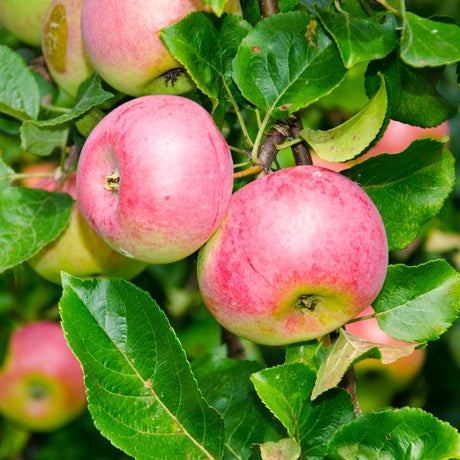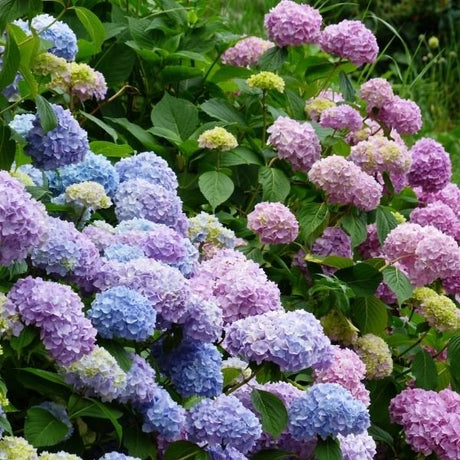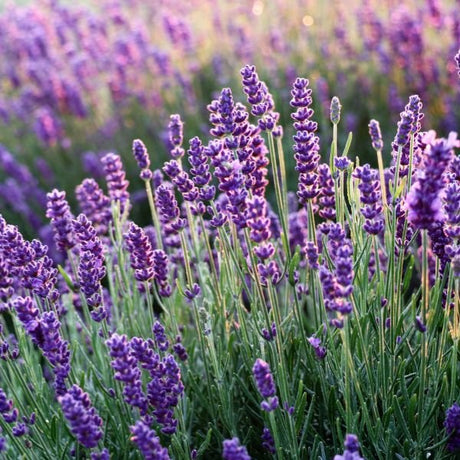Sky Blue Aster
Symphyotrichum oolentangiense (Aster azureus)
- Stay Protected with Plant Sentry ™
Sky Blue Aster is backordered and will ship as soon as it is back in stock.
Plant Sentry™
Plant Sentry™

Plant Sentry™ Protected
Your order is protected by our compliance system that:
- Prevents restricted plants from shipping to your state
- Ensures plants meet your state's agricultural requirements
- Protects gardens from invasive pests and diseases
Delivery and Shipping
Delivery and Shipping
Delivery and Shipping
Fast, Safe Plant Delivery
Ships in 3-4 business days • Tracking provided • Weather protected
| Under $50 | $9.99 |
| $50 - $99.99 | $14.99 |
| $100 - $149.99 | $16.99 |
| $150+ | $24.99 |
✓ Zone-specific timing • ✓ Professional packaging • ✓ Health guarantee
Understanding Plant Options
Nature Hills offers plants in two main formats:
- Container Plants: Grown in pots with soil, sized by container volume and plant age
- Bare Root Plants: Dormant plants without soil, sized by height measurements
Container Plant Sizes
Container sizes indicate plant age and growing capacity rather than liquid volume equivalents. Our containers follow industry-standard nursery "trade gallon" specifications, which differ from standard liquid gallon measurements.
Young Plants (6 months to 18 months old)
| Container Size | Actual Volume | Metric Equivalent |
|---|---|---|
| 2" x 2" x 3" | 0.18 - 0.21 dry quarts | 0.20 - 0.23 dry liters |
| 4" Container | 0.31 - 0.87 dry quarts | 0.35 - 0.96 dry liters |
| 4.5" Container | 0.65 dry quarts | 0.72 dry liters |
| 6" Container | 1.4 dry quarts | 1.59 dry liters |
| 1 Quart | 1 dry quart | 1.1 dry liters |
| 5.5" Container | 1.89 dry quarts | 2.08 dry liters |
Established Plants (18 months to 2.5 years old)
| Container Size | Actual Volume | Metric Equivalent |
|---|---|---|
| 2 Quart | 2 dry quarts | 2.2 dry liters |
| #1 Container | 2.26 - 3.73 dry quarts | 2.49 - 4.11 dry liters |
| 5" x 5" x 12" | 3.5 - 4.3 dry quarts | 3.85 - 4.74 dry liters |
Mature Plants (2-4 years old)
| Container Size | Actual Volume | Metric Equivalent |
|---|---|---|
| #2 Container | 1.19 - 1.76 dry gallons | 5.24 - 7.75 dry liters |
| #3 Container | 2.15 - 2.76 dry gallons | 8.14 - 12.16 dry liters |
Large Plants (3-5 years old)
| Container Size | Actual Volume | Metric Equivalent |
|---|---|---|
| #5 Container | 2.92 - 4.62 dry gallons | 12.86 - 20.35 dry liters |
| #6 Container | 5.25 - 6.01 dry gallons | 23.12 - 26.42 dry liters |
| #7 Container | 5.98 - 6.53 dry gallons | 26.34 - 28.76 dry liters |
Bare Root Plants
Bare root plants are sold by height from the root system to the top of the plant. Plants may exceed minimum height requirements.
Common Sizes:
- Trees: 1 foot, 2 feet, 3 feet, 4 feet, 5 feet, 6 feet
- Shrubs & Perennials: 1 foot, 18 inches, 2 feet
Important Notes
Container Volume Specifications
- Trade Gallon Standard: Our containers follow industry-standard "trade gallon" specifications established by the American National Standards Institute (ANSI Z60.1) for nursery stock
- Volume Variations: Actual soil volume may vary due to plant root systems and growing medium settlement
- Age Indicators: Container size primarily indicates plant age and maturity rather than liquid volume equivalents
Growing Conditions
- Plant size can vary based on variety and growing conditions
- Container size helps indicate plant maturity and establishment level
- Larger containers generally mean more established root systems and faster landscape establishment
Seasonal Availability
- Bare root plants are available seasonally when dormant
- Container plants are available throughout the growing season
- Specific varieties may have limited availability in certain sizes
Questions?
For questions about specific plant sizes or availability, please contact our plant experts who can help you choose the right size for your landscape needs.
Plant Highlights
Sky Blue Aster highlights at a glance!
-
Plant Class
-
Botanical Name
-
Brand
-
Growing Zones3, 4, 5, 6, 7, 8
-
Growth RateModerate
-
Mature Height
-
Mature Width
-
Leaf Color
-
Flower Color
-
NativeYes
-
Pollinator FriendlyYes
-
Pollinator Required
-
Bloom PeriodEarly Summer, Late Summer, Early Fall, Late Fall
Characteristics
Where To Plant
When To Prune
- Early Spring
Water & Moisture Needs
- Moderate
Sunlight Needs
Soil Needs
- Well Drained Soils

Growing Zones 3-8
Sky Blue Aster - Buy Now at Nature Hills
Like bits of the autumn sky scattered across your garden, the Sky Blue Aster (Symphyotrichum oolentangiense, formerly Aster azureus) is a native Aster perennial that paints the late season in soft blue hues. These charming daisy-like blooms appear from late August through October, brightening the landscape when most flowers fade. This native selection is a favorite among pollinators and a true butterfly magnet, especially for migrating Monarchs seeking a final nectar stop.
Sky Blue Aster forms airy, graceful mounds of slender stems topped with clusters of pale blue flowers and golden centers. Its delicate texture makes it ideal for layering between bolder plants or softening borders. Native to sunny prairies and woodland edges across North America, it thrives in full sun and well-drained soil, adding gentle color and movement wherever planted.
This species holds deep ecological importance, supporting native bees, butterflies, and other beneficial insects. A member of the Asteraceae family, it shares its lineage with other beloved fall bloomers like Black-Eyed Susans and Coneflowers, making it an ideal companion in pollinator gardens or naturalized meadows. Learn more about why Asters are the butterfly magnet your garden has been missing.
>>Jump to Planting & Care Instructions
Key Features
- Native North American perennial
- Lovely sky-blue daisy-like flowers from late summer to fall
- Attracts butterflies, especially Monarchs
- Airy growth habit softens borders and mixed plantings
- Excellent for cut flowers
- Low-maintenance and long blooming season
Landscaping Uses
Use Sky Blue Aster as a mid-border accent or mass planting to create soft color waves through your fall garden. Its floating texture complements both sturdy and delicate plants beautifully.
- Pollinator and butterfly gardens
- Meadow and prairie-style plantings
- Perennial borders
- Cut flower gardens
- Container fillers or naturalized plantings
Care & Maintenance
Hardy in USDA growing zones 3–8, this herbaceous perennial is easy to grow and adaptable to most garden soils. Once established, it's drought-tolerant and remarkably low-maintenance. Don't forget to order your Nature Hills Root Booster for strong, lifelong root support.
- Planting Time: Spring or fall
- Sun Requirements: Full sun for best flowering
- Soil Requirements: Well-drained soil; tolerates average to sandy conditions
- Moisture Needs: Moderate; use the Finger Test to check soil moisture, especially during establishment
- Mulch: Apply a 3–4 inch layer of organic mulch; learn how and why to mulch
- Fertilization Needs: Light feeding with compost in spring
- Pruning Info: Pinch or trim in early summer for bushier growth and more blooms; deadhead after blooming to extend the display
- Division Info: Divide every 3–4 years to rejuvenate growth and maintain vigor
- Special Perks: Deer- and rabbit-resistant, cold-hardy, attracts pollinators, native plant adaptable to tough sites
Fall in Love with Sky Blue Aster
Bring that crisp autumn sky down to earth with the Sky Blue Aster's delicate blooms. Their soft, daisy-like faces brighten borders, feed butterflies, and keep your garden colorful well into fall. Order your Sky Blue Aster today from Nature Hills and let your garden glow with blue this autumn season!
FAQs
What is the best time to plant Sky Blue Aster?
Plant in spring or fall when temperatures are mild to allow strong root establishment.
Does Sky Blue Aster need full sun?
Yes, it thrives best in full sun but can tolerate light afternoon shade.
How tall does Sky Blue Aster grow?
It typically grows 2–3 feet tall with a similar spread, forming graceful mounds.
Do I need to deadhead Sky Blue Aster?
Yes, deadheading helps prolong blooming and keeps the plant looking tidy.
Is Sky Blue Aster good for pollinators?
Absolutely! It's a late-season nectar source for butterflies, bees, and migrating Monarchs.



